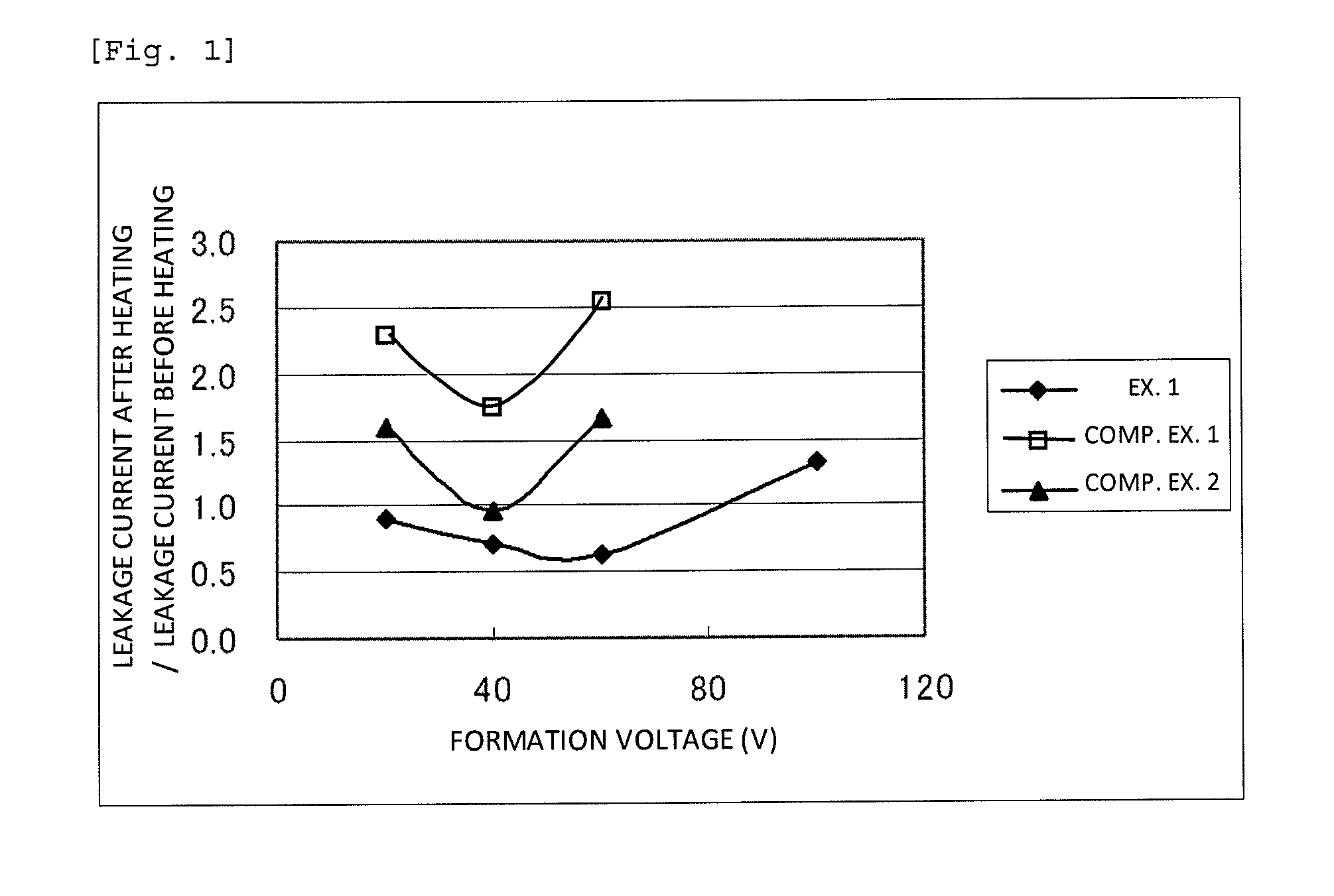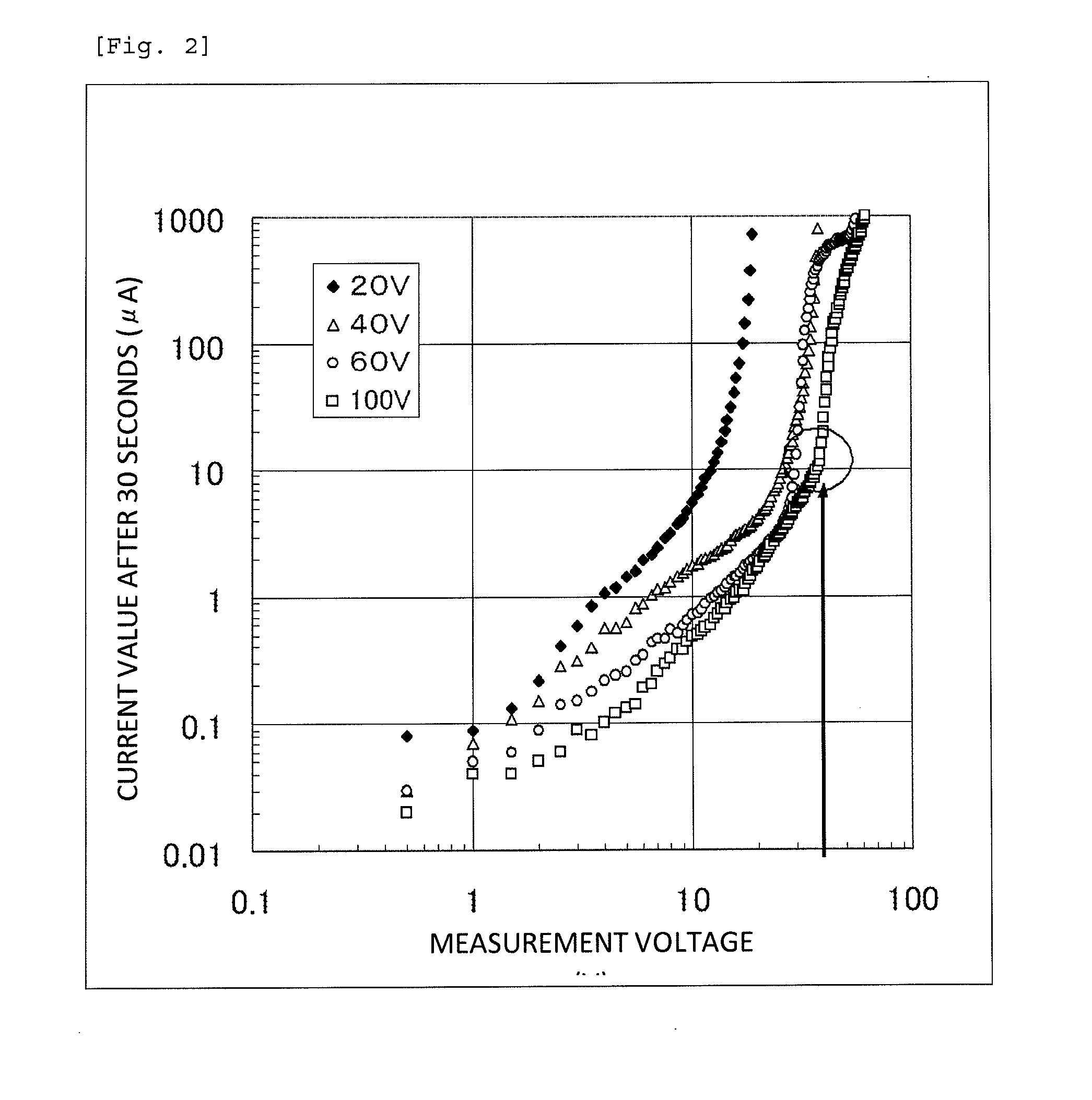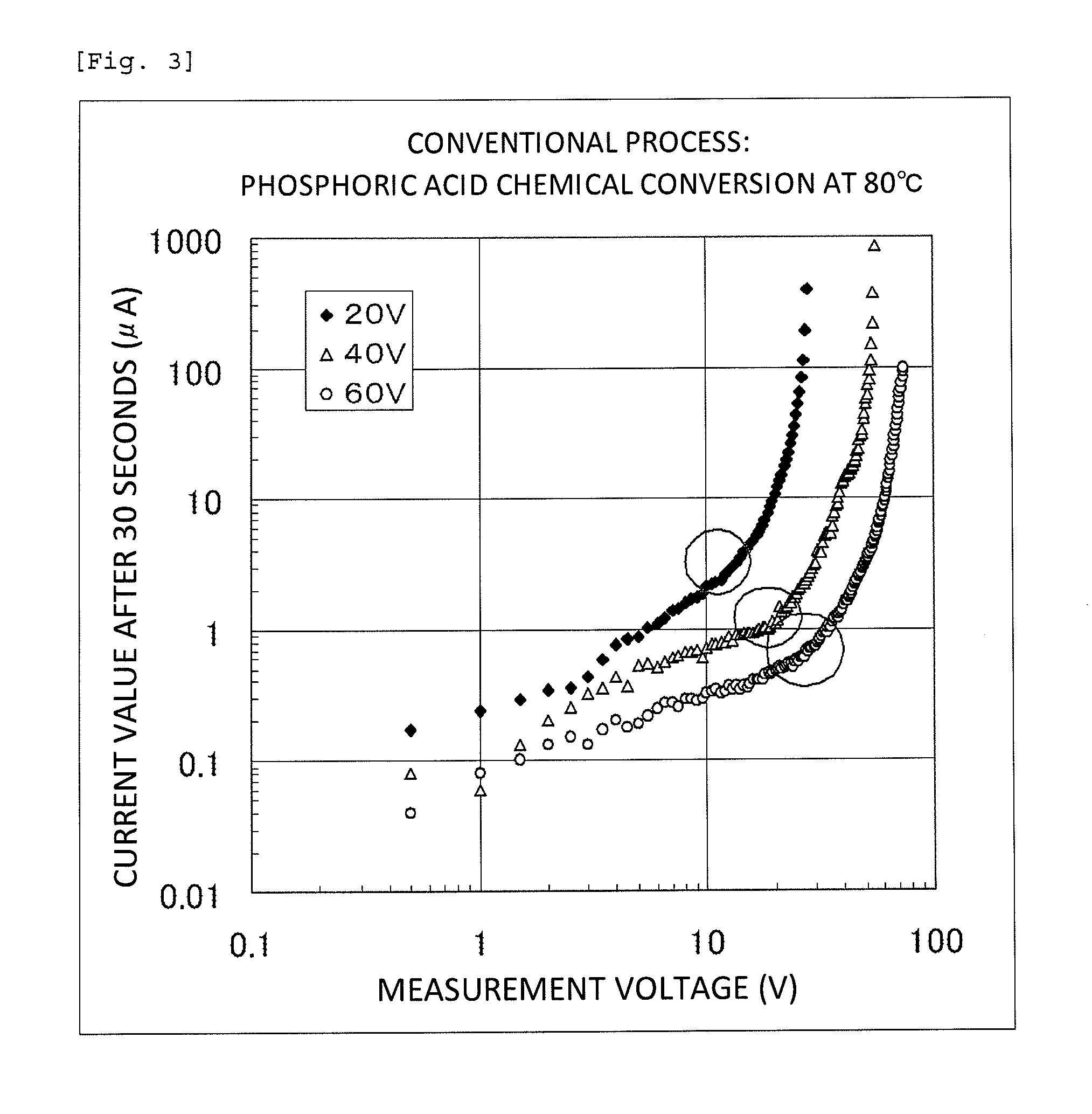Method for manufacturing capacitor element
- Summary
- Abstract
- Description
- Claims
- Application Information
AI Technical Summary
Benefits of technology
Problems solved by technology
Method used
Image
Examples
example 1
[0067]Niobium powder having an average primary particle diameter of 0.5 μm was prepared by ingot grinding, and polyisobutylmethacrylate dissolved in toluene was added to the niobium powder in an amount of 5% of the mass of the powder. The mixture was sufficiently stirred, followed by removal of toluene by evaporation. The obtained powder was molded with a tantalum powder molding machine, TAP-2R, manufactured by OPPC Co., Ltd., using a die of a 2.0 mm length and a 2.0 mm width together with a niobium wire having a diameter of 0.2 mm buried and implanted to obtain a powder molded product having an apparent green density of 3.0 g / cm3 and a mass of 22 mg.
[0068]The powder molded product was sintered at 1230° C. for 30 minutes under a reduced pressure of 5×10−4 Pa or less to produce a niobium sintered body. This sintered body had a CV value of 150000 μFV / g.
[0069]The niobium sintered body was immersed in an aqueous solution containing 3% by mass of phosphoric acid, 1% by mass of hydrogen p...
example 2
[0075]Commercially available niobium foil having a purity of 3 N and a thickness of 100 μm was cut into a piece of 10 mm×30 mm, and a niobium wire having a diameter of 0.2 mm was welded to a part of the short side of the piece. The piece was degreased with acetone, washed with nitric acid and then with water, and dried to obtain a niobium foil element.
[0076]The niobium foil element was immersed in an aqueous solution containing 3% by mass of phosphoric acid, 1% by mass of hydrogen peroxide and 25% by mass of ethylene glycol serving as a freezing point depressant, and the solution temperature was adjusted to −10° C. in a freezing equipment. The chemical conversion was performed by, first, increasing the voltage at a constant current and then maintaining a constant formation voltage for 120 minutes, 360 minutes, 480 minutes, or 600 minutes respectively. The chemical conversion was performed at a current density of 5.5 mA / cm2 or 0.83 mA / cm2 and a formation voltage of 60 to 300 V respec...
example 3
[0080]The capacitor element produced in Example 1, which was used as an anode, and platinum black, which was used as a cathode, were immersed in a 40% by mass sulfuric acid solution at room temperature, and a direct-current power supply was connected to the anode and the cathode in the forward direction. A direct current was applied between the anode and the cathode at a current of 10 mA and a voltage of 0.5 V, and the current value was measured after a lapse of 30 seconds from the start of the current application. The direct-current power source was switched off once, and a direct current was applied again at 1.0 V, which was higher than the voltage formerly applied by 0.5 V, and the current value was measured after a lapse of 30 seconds from the start of the current re-application. Similarly, the current values were measured on each time the voltage was increased by 0.5 V. FIG. 2 shows a relationship between the applied voltage values and the current values after a lapse of 30 sec...
PUM
| Property | Measurement | Unit |
|---|---|---|
| Electric potential / voltage | aaaaa | aaaaa |
| Temperature | aaaaa | aaaaa |
| Temperature | aaaaa | aaaaa |
Abstract
Description
Claims
Application Information
 Login to View More
Login to View More - R&D
- Intellectual Property
- Life Sciences
- Materials
- Tech Scout
- Unparalleled Data Quality
- Higher Quality Content
- 60% Fewer Hallucinations
Browse by: Latest US Patents, China's latest patents, Technical Efficacy Thesaurus, Application Domain, Technology Topic, Popular Technical Reports.
© 2025 PatSnap. All rights reserved.Legal|Privacy policy|Modern Slavery Act Transparency Statement|Sitemap|About US| Contact US: help@patsnap.com



